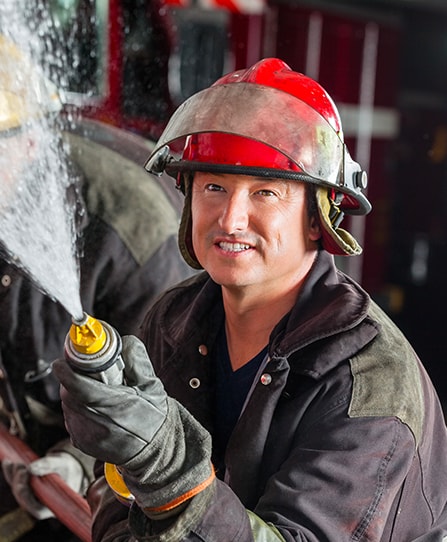
Ready to Order?
If you are ready to order, please contact Customer Service:
Telephone: 1 (800) 361-6128 Fax: 1 (800) 563-9196
Introduction
The Governor General of Canada proclaims Fire Prevention Week each year. This awareness week was created in memory of the great Chicago fire in October 8th-9th, 1871 that killed more than 250 people, left 100,000 people homeless, burned down 17,400 structures, and more than 200 acres of land.
In addition to having an escape plan and acting quickly, it is important to educate everyone about the different sounds that smoke and carbon monoxide alarms make. Look for public safety information from your local fire department and online sources, such as the Ontario Association of Fire Chiefs.
Fire Prevention Week 2022 is October 9th-15th and the theme is, “Fire won’t wait. Plan your escape.”

Activity Bursts
Grades K-2 - Safety
Ask:
- How do you know when there is danger from a fire in your home?
- What does a fire alarm sound like?
- Do you have any other kinds of alarms in your home to warn you when you need to have an escape plan?
- What do they sound like?
- Why is it important to have a carbon monoxide alarm in your home?
- What is an escape plan? Have you practised it with your family?
Have students tell you where their smoke/fire and carbon monoxide alarms are situated in their homes. Invite them to ask their parents to show them and if possible, to test them to listen to the different sounds they make. Explain that some alarms are combination smoke/fire and carbon monoxide, but they are distinguishable by their sound. That is why everyone needs to read the manual before installing their alarm(s).
Grades 3-5 - Safety, The Arts
Gather students and ask:
- Why do you think Canada dedicates a whole week to fire prevention?
- What important things do you know about fire prevention?
- What do you do at home to prevent fires?
- What do we do at school to help us prepare in case a fire happens?
Ask:
- Do some alarms make different sounds for different warnings? (Explain that some fire/smoke alarms make a siren sound, while other carbon monoxide alarms make a chirping sound.)
- What is carbon monoxide? Why is it dangerous?
- Do you have an escape plan for your home?
Ask for volunteers to share their family’s escape plan. Review and practise the fire escape plan for the school and classroom in the event of a fire.
Ask:
- What would you do if the fire alarm went off at school and you were in the library? Washroom? Hall? Review correct procedures.
Many fire safety planning resources are available online. Students can read and complete the information and activities to build their safety knowledge.
Grades 6-8 - Safety, Critical Thinking, The Arts
Share the information in the Introduction and the theme for Fire Prevention Week 2021: “Learn the sounds of fire safety.” Ask:
- What do you know about different kinds of alarms that are installed in your home to keep you safe?
- Do all the alarms in your home make the same sound? (Explain that some alarms are combination smoke/fire and carbon monoxide, but they are distinguishable by their sound. That is why everyone needs to read the manual before installing their alarm(s).)
- What is carbon monoxide and why is it dangerous? (Have students consult online sources such as the British Columbia Fire Safety Education page for more information.)
Invite each student to make a “Safety in the Home” reminder sheet to post in their homes. Encourage students to use a tablet or computer to design their poster, then print, share, and send home.
Suggestions for printing:
To save on paper, reduce the size of the safety posters prior to printing (e.g., fit six posters on one sheet). If your school has a laminating machine, you can laminate the card-sized posters for durability.
If your printer is compatible with magnet sheets, you can create fridge magnets! Alternatively, mini magnets can be purchased at most dollar stores, hardware stores, or craft stores. Simply glue to the back of the poster to turn it into a fridge magnet.








